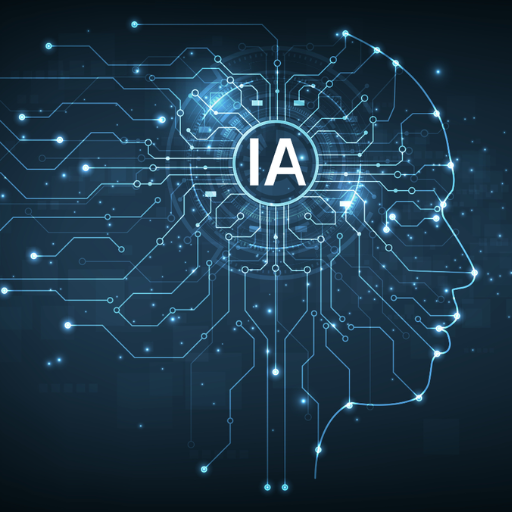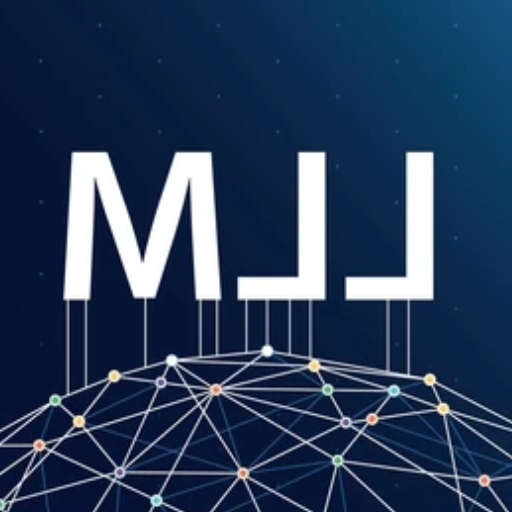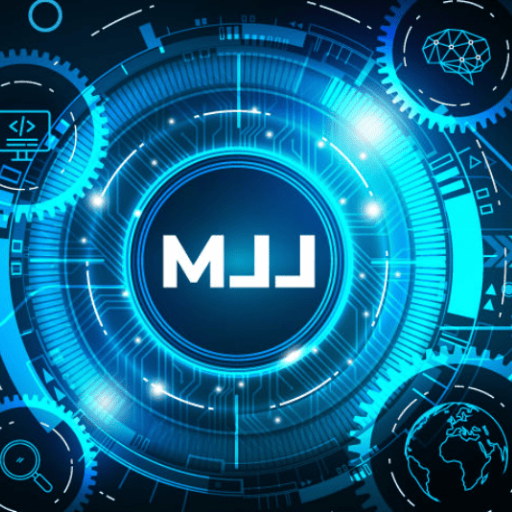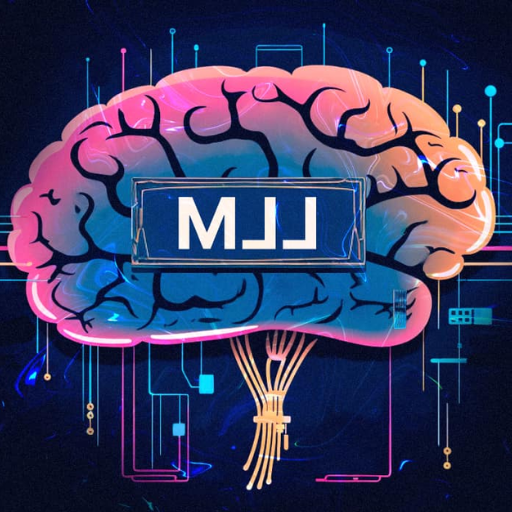Unlock the Power of Large Language Models: A Comprehensive Introduction to LLMs

How we interact with technology is transformed by large language models or LLMs. From chatting to crafting and analyzing large chunks of data, LLMs can understand, generate, and accomplish almost all tasks that relate to the human language. Moreover, this blog will introduce LLMs, their functionality, application, and growing potential in virtually every industry. First, we look into the basics of LLMs, encompassing their undertakings and the engineering marvels they make in AI or Artificial Intelligence. Second, we touch upon the various functions of LLMs, from writing assistance to automating customer services through bots and even complex data analysis. Last but not least, we focus on the repercussions and ethical problems that come with LLMs to give a well-balanced discussion over the challenges of such great innovation. This article will highlight LLMs, outlining their significance in artificial technology solutions.
What exactly is a Large Language Model (LLM)?

With LLMs, you have some of the most sophisticated models trained on large amounts of data, such as text documents, to recognize and produce human-like language. LLMs utilize deep learning technology, with neural networks managing the analysis of information’s context, word sequence prediction, and formulating applicable solutions. These models can perform numerous tasks, including text formatting, translation, summarization, and other activities falling under the natural language processing bracket. LLMs serve in multiple domains due to their ability to recognize patterns and produce pertinent output LLMs offer.
Defining LLMs: The AI revolution in natural language processing
Deep learning is now applied on a large scale in systems known as large language models (LLMs). These robust Artificial Intelligence systems can self-generate human-language text. LLMs use deep learning techniques like speech recognition systems and neural networks to process context, word prediction, and response generation. They can generate human-like content, translate, create summaries, and perform other simple or complex tasks involving human language. They can create precise and relevant output by employing a system that learns patterns from vast information.
How do Large Language Models differ from traditional AI?
The scope, structure, and functionality of Large Language Models (LLMs) stand apart from conventional AI systems. While rule-oriented approaches or application-specific systems are common to traditional AI, LLMs utilize higher-order neural network models like Transformers. They can analyze unprecedented volumes of data and, in turn, create and process text like humans. LLMs can use unsupervised or semi-supervised learning on a previously thought impossible scale alongside structured data or set algorithms, a common practice in AI. For instance, GPT-3, with its 175 billion parameters, can excel in generating, summarizing, or translating text. Unlike traditional AI systems focused on narrowly defined tasks, LLMs are more versatile and capable of performing many NLP tasks without further training. This makes LLMs adaptable to various fields, enhancing their functional capabilities.
The architecture behind LLMs: Transformers and neural networks
Lange Language Models (LLMs) utilize attention-driven Transformers and Neural Networks to achieve complex capabilities. Parallel multitasking Neural Networks power LLM comprehension and language production. Transformers focus on relevancy and attend to essential contextual phenomena, and multilayered networks of AI algorithms allow the capture of relationships and patterns. The combination of these components effectively solves diverse and complex language queries.
How do Large Language Models work?

Feeding LLM's large text datasets enables them to comprehend and use algorithms for language prediction or generation. To master grammar and context, these models utilize diverse data and Multineural Interconnected networks capable of extracting different patterns from multilayer data. With transformer architecture, attention mechanisms filter out relevant information, guaranteeing proper language processing. Finally, translations, summarization, and response generation are achieved once their assize lower-level structures are trained, producing contextualized text.
The training process: Feeding LLMs vast amounts of data
When training large language models, they are given massive datasets from various sources, including books, articles, and websites. We prioritize the diversity of the data and the context in which it was written or spoken. The model can identify and learn complex linguistic structures, meaning, context, and so forth, which allows for the seamless output of text using natural language understanding. Advanced computing power combined with optimization reduces the time and effort needed to fine-tune the model's use of language.
Tokenization and prediction: The core mechanics of LLMs
Like any other natural language processing task, tokenization and prediction come naturally in how large language models work. In addition, I tokenize or divide the text into smaller pieces, such as words, subwords, and characters. Each piece or token gets an ID for easy fetching later. These tokens are then used in a predictive approach based on probabilities to estimate the next token likely to follow in context to previous tokens.
Important technological aspects associated with this task consist of:
- Vocabulary Size – This refers to how many unique tokens exist. Most LLMs exist within a range of 30,000 tokens up to over 50,000.
- Context Window – Refers to the upper limit of tokens I can process at a time and make predictions; advanced models typically range from 512 to 4096 tokens.
- Embedding Size – This indicates the range of token embeddings' dimensionality; in high-capacity models, it is usually between 512 and 2048, which allows for dense and meaningful representations.
- The number of Attention Heads refers to the degree of attention in the model. It usually depends on the sophistication of the architecture and can range from 8 to 16 or even more.
- Transformer Layers – Refers to the number of data-stacked layers processed, which in advanced systems tends to range from 12 to 96.
These mechanics naturally produce text that is logically sensible and contextually accurate. Due to this layered method, every step builds on the previous one, allowing me to generate an output that possesses both accuracy and depth.
Self-Attention and Context Understanding in LLMs
Self-attention is a key mechanism used in self-supervised trained models such as large language models (LLMs), which enables the models to interpret the significance of every word in its surrounding context and other words. It permits the model to treat words differently depending on the context in which they are placed. For example, it can determine whether the bank in the statement “The bank by the river was quiet” denotes a financial establishment or the bank of a river based on self-attending surrounding words.
On a more detailed level, self-attention works through the following:
- Query, Key, and Value Matrices – Each input embedding is split into three vectors known as the Query, Key, and Value Matrices with weight matrices that were previously learned. Conversion from each word to its embedding is also known as the relationships of the constructs stage.
- Scaled Dot-Product Attention – Each query is executed by estimating attention score. Such scores are then put through the softmax function with scaling factors aimed at preserving them from reaching more than the desirable value.
- Weighted Sum of Values – Subjects with the most relevant words produce greater emphasis when values are interposed with nodes; therefore, these values can be derived from the remaining nodes.
The model's decoding capabilities can be improved effortlessly by using the described mechanism, as it allows the model to keep track of meaningful relationships in the selected text or input. A good example of this understanding is linking a "he" pronoun to its antecedent earlier in the sentence.
Corresponding Technical Parameters:
- Attention-locality A – Allows for embedding word vectors into a specific space. Heavily advanced models like GPT-4 use dimensions ranging from 512 to 4096.
- Attention Heads – Allows a self-attention function to be broken down into several parallel operations. The greater the architecture, like with BERT or GPT models, the more heads the models implement; 8, 16, and 32 heads are standard.
- Sequence Length – Denotes the maximum number of tokens the model can process. While most operate between 512 and 2048, cutting-edge systems, such as GPT-4, can handle 32,768 tokens.
- Batch Size – This represents the number of examples to work on simultaneously. Ideally, this will be a middle-ground between model performance and computing power, often between 16 and 128.
The intricate and contextual self attention enables LLMs to process the intricacies of human language and subsequently produces fluent, coherent and meaningful language outputs.
What are the most popular examples of Large Language Models?

Here are some of the most well-known examples of Large Language Models:
- OpenAI's GPT Series - The most well known models conversationally are GPT-3 and GPT-4 with the wide variety of offerings in content generation, coding support, and much more.
- Google’s BERT - Bidirectional Encoder Representations from Transformers is well known for performing exceptionally well on many tasks involving a deeper understanding of language.
- Google's PaLM - Pathways Language Model is designed to scale and handle complex linguistic tasks.
- Meta's Llama - Large Language Model Meta AI provides excellent efficiency for research use.
- Anthropic's Claude - Tailored for safe and friendly AI communication.
- Microsoft's MT-NLG - Megatron-Turing Natural Language Generation is a great model for accomplishing natrual language comprehension and generatoin tasks.
These models mark the current pace of developments in AI technology, which is considerably better at understanding and generating languages than its predecessors.
ChatGPT and GPT Series: The Poster Children of LLMs
The developments in the GPT series by OpenAI mark a tremendous achievement in the domain of large language models (LLMs). Models like ChatGPT leverage the transformer architecture, focusing on scale training to offer excellent language comprehension and generation capabilities. Here, you will find brief responses to the salient features of the GPT series and their corresponding metrics:
- Training Methodology:
GPT models are trained using unsupervised learning techniques on extensive text datasets compiled from various sources. The goal is to modelo acirca languages and capture text effectively using text prediction, by doing so, the models can create relevant contextual text.
- Technical Parameters:
- GPT-3:
- Parameters:175 billion
- Dataset Size:570 GBs of diverse text
- Training Time:~3 – 4 weeks on advanced GPU clusters.
- ChatGPT:
- Built upon the 3.5 and 4 versions, it utilizes RLHF to perform better in dialogues.
- Parameters (GPT-4): around 1 trillion (exact number undisclosed by OpenAI).
- Core functionalities:
- Text generation, summarization, translation, and response generation to queries.
- Contextual understanding enhancements in multi-turn dialogues in ChatGPT.
- Safety and Alignment:
- ChatGPT is adjusted to give safe answers and can assist users with relevant factual information. It uses RLHF methodologies and testing frameworks to reduce harmful responses drastically.
The GPT series and ChatGPT classifies the cutting-edge technology of AI-powered language models which incorporates huge amounts of data, novel training techniques, and emerging advancements, catalyzing the revolution of LLMs.
Other Notable LLMs: LLaMA, BERT, and More
In addition to GPT, many other LLMs have significantly impacted NLP, including LLaMA and BERT. These LLMs differ in their objectives, architectures, and use cases.
- LLaMA (Large Language Model Meta AI):
- Meta-designed LLaMA to be highly efficient and accessible in the LLM space.
- Key Features:
- Parameter Sizes: 7B, 13B, 33B, and 65B.
- Aimed at performing research by providing accessibility to large language models.
- Implements Chinchilla scaling laws while optimizing training datasets to provide an optimal volume of data to model size.
- Use Cases:
- Academic research, lightweight implementations, and specialization domain fine-tuning.
- BERT (Bidirectional Encoder Representations from Transformers):
- BERT by Google significantly advanced NLP with the adoption of bidirectional training.
- Key Features:
- BERT is primarily concerned with how context is formed by considering words before and after a particular word.
- Two main versions:
- BERT Base (12 layers, 768 hidden dimensions, 110M parameters)
- BERT Large (24 layers, 1024 hidden dimensions, 340M parameters)
- Uses a masked language model (MLM) along with next-sentence prediction (NSP) tasks for training.
- Use Cases:
- Sentiment analysis, text classification, question answering, and entity name recognition.
- Other Models:
- Google’s development of T5 (Text-to-Text Transfer Transformer) adopted the text-to-text framework.
- Parameter Sizes vary from 60 M to 11 B.
- This excels in text generation, summarization, and translation tasks.
- XLNet:
- It integrates autoregressive models with bidirectional features.
- It resolves some of the pretraining issues BERT had.
- Robertathat:
- An optimized variant developed by Facebook that focuses on more training, larger datasets, and better model performance.
These models capture different strategies to tackle diverse NLP tasks and processes. The continuous development of these models has improved language models’ functionality and use in real-life situations.
What are the key use cases for Large Language Models?

LLMs are helpful in many different areas of day-to-day life, including:
- Natural Language Understanding (NLU): Extracting sentiments, intents, and topics from human-generated text for further analysis.
- Content Generation: Writing articles, summaries, and other forms of creative text.
- Chatbots and Virtual Assistants: Enabling customer care bots to help users with common inquiries, facilitate user interactions, or provide assistance whenever needed.
- Language Translation: Machine translation of different languages and dialects to enable multilingual speakers to communicate freely.
- Code Generation and Debugging: Helping software developers write complex applications by automating the optimization and debugging processes.
- Personalized Recommendations: This feature delivers recommendations based on shopping history, preferences, and the “customer is always right” mentality.
- Education and Tutoring: Engaging students for more profound understanding by providing customized explanations and relevant materials.
These examples showcase how industry productivity is enhanced through LLMs.
Text generation and content creation
As with any large language model, text generation and content creation can accomplish various tasks, such as writing blog articles, designing marketing content, or crafting creative stories. Large language models combine information from multiple sources, making it possible to generate contextually correct content that meets your needs. Furthermore, they are very good at explaining complex issues in simple language and making sure your message is captivating for your audience.
Language Translation and Multilingual Capabilities
When dealing with translation issues or multilingual capabilities, it is essential to consider LLMs' advantages and engineering skills. These models can simultaneously translate documents into several languages without changing the document's context, tone, or meaning. Attention mechanisms and other deep learning technologies study the connection between words in a particular source language and a target language.
Key Technical Parameters:
- Integrated Languages: More than 100 languages, including English, Spanish, and Chinese as well as any other minor languages are supported by most LLMs.
- Translation Accuracy: Well-documented languages tend to be much more accurate, thanks to the effect of training data. Quality is frequently obtained using benchmark assessments like the BLEU (Bilingual Evaluation Understudy) scale.
- Context Awareness: Not all LLMs can comprehend advanced idioms or colloquial narrower meanings, so some translations need to be less literal than others.
- Latency: The limited processing power available usually determines the speed of translation. Top LLMs achieve milliseconds per token for real-time usage, though.
- Customization: Domain-specific terminology accuracy is greatly improved, along with nuance-specific legal or medical translations with fine-tuned “custom” translations.
So, with the above features, LLMs enhance communications without language barriers, helping collaboration and inclusivity globally. Ask if you would want further detail descriptions or parameter divisions, I will assist you.
Summarization and information extraction
Although LLMs allow for summarization and information extraction, enabling a user to narrow down large amounts of data to relevant data points, I tend to rely on these models to produce short summaries, as their key point identification feature is handy. LLMs specialize in complex information extraction, meaning they can gather and provide specific information or semi-structured data (names, dates, essential topics) with minimal effort, making the process much more efficient. These features improve over time through constant improvement and adjustment to guarantee accuracy among different content types.
How are Large Language Models changing the AI landscape?

Everything from chatbots to virtual assistants becomes more intelligent with larger language models (LLMs) because human and machine interaction becomes more effortless. Furthermore, LLMs help improve further translation, summarization, and sentiment analysis work, increasing understanding and accessibility across various languages and domains. The ability to analyze and produce human-like text also enables innovation in research, education, and business practice, thus making AI implementation more versatile and valuable in real life. Additionally, the functioning mechanisms of LLMs make automation more intelligent and effective, enabling progress in content creation automation.
The impact of LLMs on natural language processing
AI has become more sophisticated due to the introduction of large language models (LLMs), which have transformed how humans interact with machines. LLMs allow chatbots and virtual assistants to facilitate more profound and context-relevant discussions with users. Their deep neural architectures, typically based on transformer models, enable high-quality tasks like machine translation, sentiment analysis, and document summarization. Automated processes make translation, summarization, and sentiment analysis easier.
One notable effect of Large Language Models (LLMs) is the ability to manage context for extensive text sequences, which overcomes earlier models' challenges. For example, Google's PaLM and Meta's LLaMA models perform wonderfully when generating responses because they understand the meaning behind the words and phrases of the input. Another remarkable step forward is integrating multilingual processing, which easily allows text generation and translation between many languages. This has been aided by fine-tuning the specific task and transfer learning that improves the model's performance on the intended purpose.
Notwithstanding all this helpful information, adopting LLMs poses issues such as high computational resource costs and possible biases within the text. Nonetheless, innovations such as sparsity and model compression make it easier to implement LLMs for more NLP tasks and obtain good results.
LLMs as foundation models for various AI applications
LLMs serve as Foundation Models because they provide the means for developing multiple AI applications. Tasks like summarizing texts, detecting the sentiment of a text, or building a conversational agent can be done because of the profound contextual understanding. Industries employ LLMs for customer-centric activities such as interacting with clients, document editing, and even more innovative tasks like content creation and programming. When fine-tuned to specific domains, these models help boost productivity and improve workflow in many areas.
What are the limitations and challenges of Large Language Models?

Like any AI model, LLMs have their own set of limitations and challenges that make things difficult. One of the primary concerns is the propensity to fabricate information, resulting from a lack of proper comprehension and reliance solely on learned behaviors. They also tend to reinforce any biases within the training data, which poses ethical issues and can have negative consequences. Furthermore, these LLMs require a large amount of computational resources, which makes them expensive and detrimental to the environment. There is also the concern of privacy risks since LLMs could potentially leak sensitive information from the training data. Lastly, there are often barriers to interpretability created by the delimitations, complexity, and size, which makes controlling their behavior and fully understanding the consequences exceedingly challenging. These challenges must be resolved to ensure AI is used effectively and responsibly.
Ethical concerns and potential biases in LLMs
The data on which large language models are trained contains significant biases and ethical issues. These models learn from existing data, which is usually biased due to the discrimination and inequalities within society. As a result, these biases tend to affect the output of the models, often leading to stereotyping or misrepresentation. Diversity in training datasets and their quality is a critical issue to consider. It includes factors like algorithms intended to identify and reduce bias, such as differential privacy or fairness constraints. Moreover, regular auditing of models and retraining with unbiased datasets can be done to make them fairer. Providing clear descriptions of model capabilities and limitations and the established ethical test procedures aid in responsible model deployment and use.
Computational requirements and environmental impact
In my opinion, Large Language Models (LLMs) are incredibly complex and require powerful hardware, such as GPUs and TPUs, to efficiently process massive amounts of data. Moreover, their power requirements are directly not proportional but hyper likely to their environmental cost. When deployed and trained, these models consume a lot of energy, making carbon emissions unavoidable. Rectifying this entails working towards model efficiency, using renewable energy for data centers, and focusing on smaller, even though not very powerful, models where appropriate. Finding this equilibrium is significant as technology develops and changes.
References
- Introduction to Large Language Models - Google Cloud Skills Boost
- Introduction to Large Language Models - Google Developers
- What is LLM? - Large Language Models Explained by AWS
Frequently Asked Questions (FAQ)
Q: What is an introduction to large language models?
A: An introduction to large language models provides an overview of advanced artificial intelligence systems designed to understand and generate human language. These models, like GPT-3 and GPT-4, are trained on vast datasets. They use deep learning techniques to process and generate text, making them powerful tools for various natural language processing tasks.
Q: How do LLMs work?
A: LLMs use complex neural networks, specifically transformer models, to process and understand human language. They are trained on massive text datasets, learning patterns, and relationships between words and concepts. When given a prompt or query, LLMs predict the next word or sequence of words based on their training, allowing them to generate coherent and contextually appropriate text.
Q: What are some examples of LLMs?
A: Examples of LLMs include GPT-3 and GPT-4 by OpenAI, BERT by Google, LLaMA models by Meta, and Claude by Anthropic. These large models are designed to understand and generate human language, with capabilities ranging from text completion to complex reasoning tasks. Other examples include T5, XLNet, and DALL-E, a multimodal model that generates images from text descriptions.
Q: What are the primary use cases for LLMs?
A: LLMs have numerous use cases across various industries. Some typical applications include: 1. Content creation and summarization 2. Language translation 3. Conversational AI and chatbots 4. Code generation and programming assistance 5. Text analysis and sentiment analysis 6. Question answering systems 7. Creative writing and storytelling 8. Research and data analysis These language models can be fine-tuned for specific tasks, making them versatile tools for many applications.
Q: How are LLMs trained?
A: LLMs are trained on massive datasets containing billions of tokens from various sources such as books, websites, and articles. The training process involves exposing the model to this data and using machine learning algorithms to adjust the model's parameters. Techniques like unsupervised learning and reinforcement learning are often employed. The training process can take weeks or months and requires significant computational resources. After initial training, fine-tuning can be done to adapt the model for specific tasks or domains.
Q: What is the significance of the number of parameters in LLMs?
A: The number of parameters in an LLM is crucial in determining its capabilities. Models with billions of parameters, like GPT-3 with 175 billion, can capture more complex patterns and relationships in language. More extensive models typically demonstrate improved performance in language generation, understanding context, and reasoning. However, they also require more computational resources for training and deployment. The trend towards larger models has led to significant natural language understanding and generation advancements.
Q: How does fine-tuning enhance the capabilities of LLMs?
A: Fine-tuning is a process that adapts a pre-trained LLM to specific tasks or domains. It involves training the model on a smaller, specialized dataset related to the target application. This process allows the model to learn task-specific knowledge while retaining its general language understanding. Fine-tuning can significantly improve an LLM's performance on specific tasks, such as medical diagnosis, legal document analysis, or customer service interactions, making the model more valuable for particular use cases.
Q: What are the potential limitations and ethical concerns surrounding LLMs?
A: LLMs offer immense potential but have limitations and ethical concerns. These include: 1. Bias in training data leading to biased outputs 2—potential for generating false or misleading information 3. Privacy concerns related to training data and user inputs 4. Environmental impact due to high energy consumption during training 5. Potential job displacement in specific industries 6. Challenges in explaining model decisions (lack of interpretability) 7. Copyright and intellectual property issues: Addressing these concerns is crucial for the responsible development and deployment of LLMs.